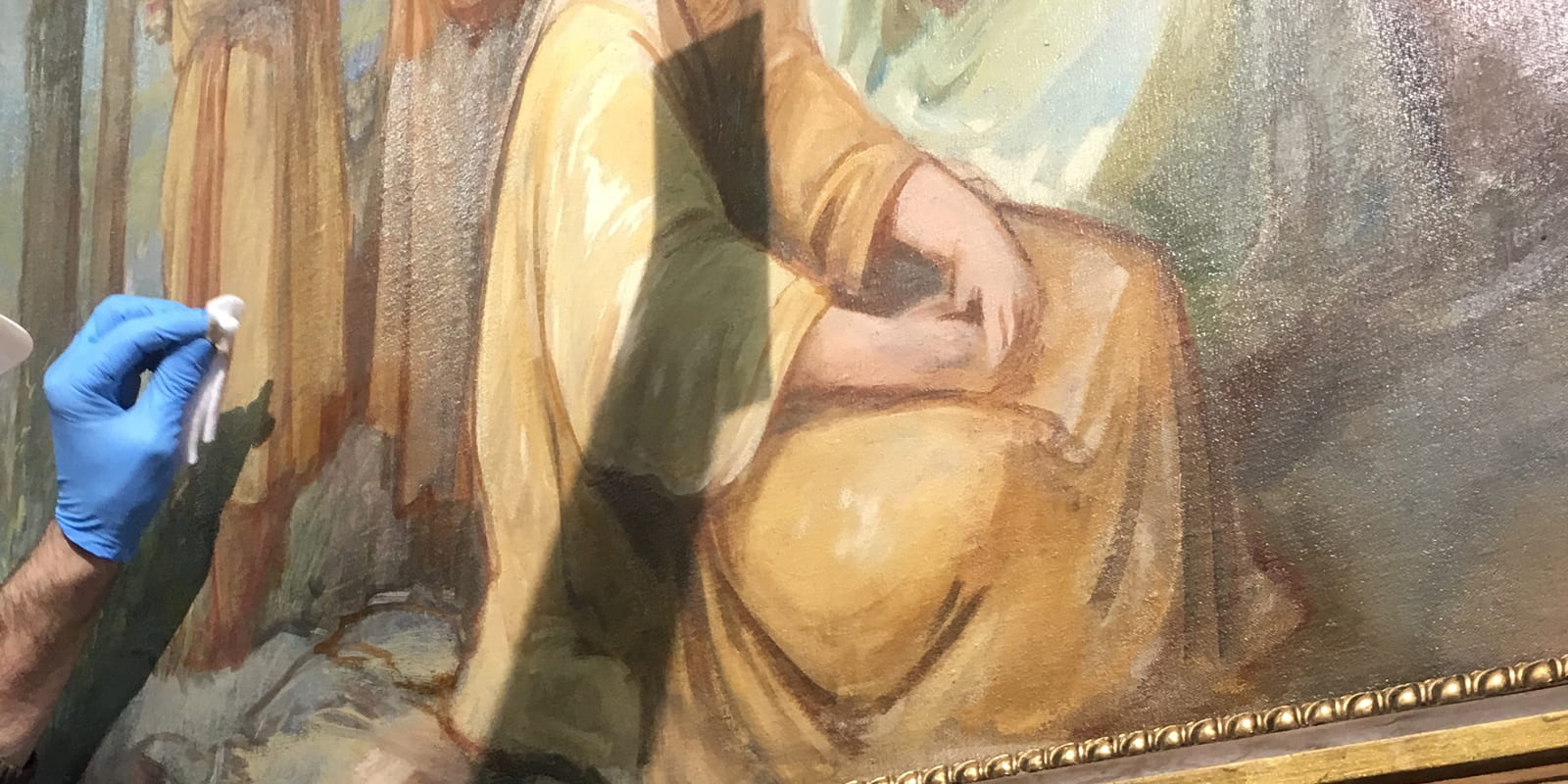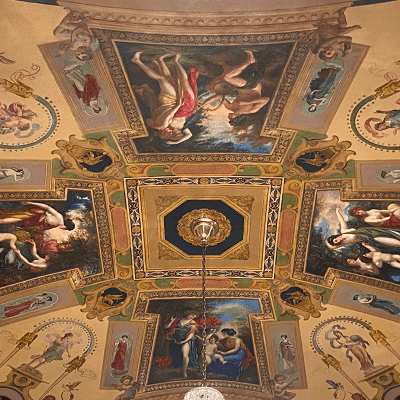Fine artwork restoration combines science, research, and a craft that is meticulous and delicate, breathing new life into masterpieces of bygone eras. Behind the scenes, highly skilled art restorers work tirelessly to preserve and rejuvenate these cultural treasures, ensuring they continue to captivate audiences for generations to come. In this article, we will delve into the fascinating world of fine art restoration, shedding light on the meticulous process that brings faded and damaged works of art back to their former glory.
Examination and Assessment
The restoration process begins with a comprehensive examination and assessment of the work of art. A team of conservators, often including art historians, scientists, and skilled restorers, carefully inspect the piece. They document its condition, noting any type of damage, degradation, and previous restoration attempts. Advanced imaging techniques such as X-rays, infrared photography, and UV analysis are frequently employed to uncover hidden details and underlying issues. The resulting condition report will aid art conservators in their process as they work to restore each area of damage to the artwork and return the piece to its historical appearance.
Cleaning
One of the most critical steps in fine artwork restoration is the cleaning process. Over time, dirt, dust, grime, and layers of aged varnish can accumulate on the surface of a painting. Using specialized solvents and gentle cleaning agents, restorers painstakingly remove these layers to reveal the original colors and textures beneath. The goal is to clean the painting without causing harm to the underlying paint layers. Specialized tools, such as brushes, cotton swabs, and soft cloths are utilized by restorers to gently wipe away any surface grime or aged varnish. The conservator must understand the finishes present on the artwork to ensure the correct cleaning solutions and tools are used during the art restoration process.
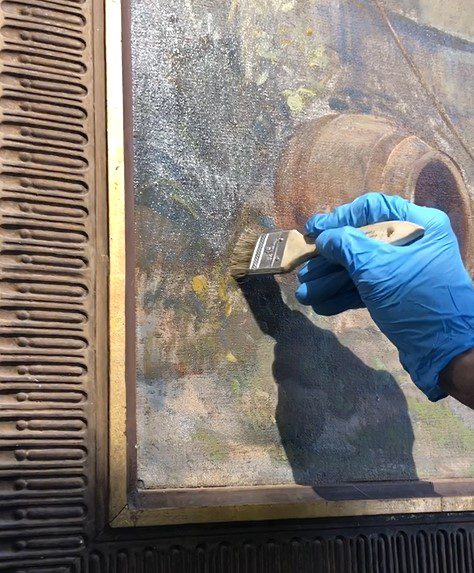
Cleaning the Fine Artwork using a brush at the Fulton County Courthouse
Structural Repairs
If the artwork has suffered physical damage, such as tears, punctures, or flaking paint, skilled restorers perform structural repairs. This may involve reinforcing the canvas, filling in gaps or losses in the paint layer, and securing loose or detached elements. During this stage, any damage that is found will be assessed and treated based on the specific type of damage, including UV or water damage, paint loss, craquelure, abrasion, or any other notable form of physical damage. To reattach flaking paint, restorers often use a fine-tipped brush and a reversible adhesive, such as a conservation-grade adhesive, to secure the loose paint fragments back onto the canvas or surface. Gentle heat may also be employed to soften the paint layers and previous adhesives and create a more malleable surface on which to adhere the paint fragments. During this process, the canvas may need to be detached from the original frame and stretcher and reapplied to a new or reinforced stretcher. Doing so ensures the canvas will remain taut, and the repairs made to the canvas can be done on a sound surface. The overall objective of this step is to stabilize the artwork's physical structure while retaining its original integrity.
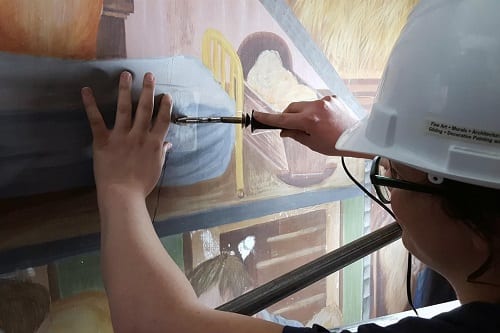
Reattaching flaking paint at Hamilton Smith Hall
Inpainting and Retouching
Inpainting and retouching are processes in which conservators carefully reintroduce missing or damaged paint to seamlessly blend with the original. This is a highly delicate task that requires an in-depth understanding of the artist's techniques and a keen eye for color matching. The goal is to make the restored areas harmonize with the rest of the artwork, ensuring that the viewer's gaze is not distracted by visible repairs. This task should only be undertaken by a trained conservator with knowledge of the style and skills necessary to replicate the original artist’s work. All inpainting completed by conservators should be done in a manner that does not harm the original artwork and is reversible.
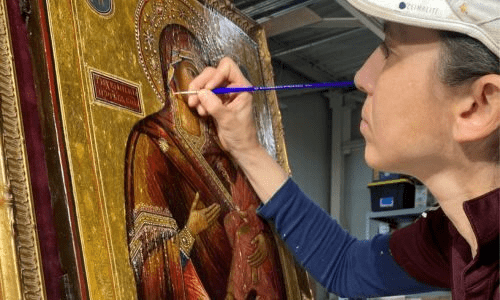
Fine art inpainting in progress by a conservator in our studio.
Varnishing
After cleaning and inpainting, the artwork is typically varnished. Varnish serves several purposes, including enhancing the colors, protecting the paint layer, and providing a uniform surface finish. Once the paint layers have been repaired and restored to their original appearance, the conservator will brush on the varnish in an even layer and allow it to dry. Restorers select a reversible varnish, allowing future conservators to remove it if necessary without damaging the original paint.
Documentation
Throughout the restoration process, meticulous documentation is essential. Conservators record each step, from the initial examination to the final treatment. Detailed notes, photographs, and scientific analyses create a comprehensive record of the artwork restoration. This record can be valuable for future reference and research about the piece of art. It can also serve as a complete log of all work done to the piece in case a future conservator needs to reverse the previous conservation efforts.
Preservation and Display
Once the fine artwork restoration process is complete, the artwork is carefully prepared for display or storage. It may be framed with archival materials, placed under controlled environmental conditions to prevent deterioration, and, if in a museum or gallery, exhibited to the public. All necessary precautions must be taken to ensure the safety and longevity of the artwork. These could include placing the piece in an area that does not get direct sun exposure to limit the chance of UV damage or properly storing the artwork in a safe, dry space within a gallery to reduce the chance of water or other environmental damage.
Fine artwork restoration is a labor of love that bridges the past and the present. Through the expertise and dedication of skilled conservators, artworks can be revived to their former glory. This process not only preserves our cultural heritage but also allows us to continue experiencing the beauty, history, and stories contained within these masterpieces. Fine art restoration is a testament to the enduring power of art and the commitment to safeguarding the treasures of human creativity for generations to come. Our skilled conservators are trained in the fine artwork restoration process. Please reach out or request a consultation to learn more about the fine art restoration services we offer and how our team can assist with your historic artwork restoration projects.

